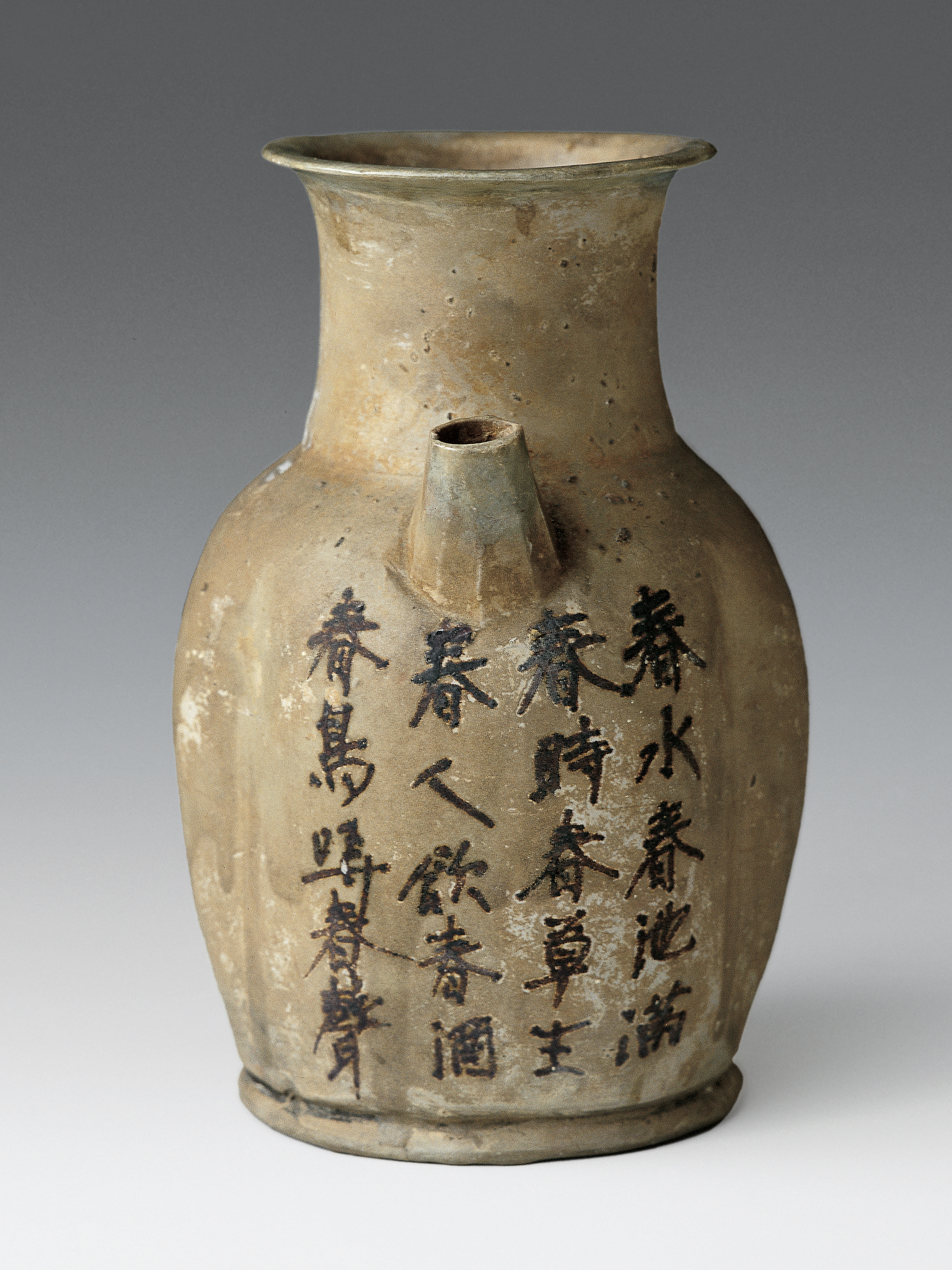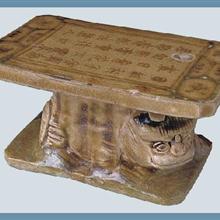Dimensions: Height: 19cm
The handled ewer was a utensil for pouring wine. Poem design was an important feature of Changsha Kiln porcelain decoration. The poem on this ewer is rather colloquial. Written in vigorous handwriting, it is typical of the artwork of the Changsha Kiln. The ewer’s mouth is inside-out and it has a wide neck, a short spout, a handle attached to its back, a melon-shaped body and a flat bottom. There is a poem written in brown on the front beneath the spout. It is a poem describing spring, which was commonly used in Changsha Kiln porcelain.
When it became warm and moist, plants started to grow while stretches of earth were covered with green. With birds chirping and flowers blooming, everyone was overflowing with vitality. “Celebrating Spring” is a common theme in ancient China, these kinds of poem portray the flourishing nature of Spring and people enjoying themselves in it. The poem on the porcelain is named “Drunk in Spring” which matches with the ewer’s function and subconsciously arouses people’s desire for wine.
Spring wine, called frozen wine brew, was popular in the southern part of China. This kind of wine was so named because it was made in bitterly cold winter and drunk in spring. Spring wine is a general name for the wine made from grain.
There was already a specific name for the wine ewers made during the Tang Dynasty, which can be seen often in the poems. According to statistics, more than one hundred poems have been discovered from artifacts made in the Changsha Kiln and most of them are written on such melon-shaped ewers. Such ewers sometimes are also used as teapots. This proves a there was a combination of poem and calligraphy in the ChangSha kiln. Specifically, it is an integration of tea, wine as well as culture. In other words, this is a reflection of wine and tea being raised to the high level of culture.





